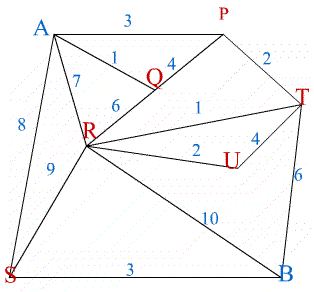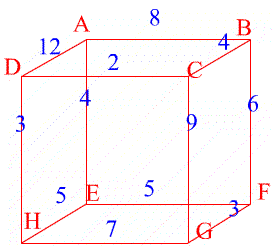Or search by topic
Number and algebra
Geometry and measure
Probability and statistics
Working mathematically
Advanced mathematics
For younger learners
Maximum Flow



- Problem
- Getting Started
- Student Solutions
- Teachers' Resources
Yanqing from Lipson Community College and Andrei from Tudor Vianu National College, Bucharest, Romania both sent correct solutions.
Andrei wrote:
" As I am not familiar with graph theory, I first read the hint and the notes of the problem, then I looked on the web for the Maximum flow, minimum cut theorem. I found different examples, algorithms of solving such problems, as well a possible list of utilisation.
I started with the definition of terms: a cut in a network is a minimal set of edges whose removal separates the network into two components, one containing the source, and the other the sink."
In the first network a cut through $PT$, $RT$, $RU$, $RB$, and $SB$ separates the network showing that the flow cannot be more than $18$ units (the total flow through these edges).

This flow is possible by sending: $3$ units along $ASB$, $5$ units along $ASRB$, $5$ units along $ARB$, $2$ units along $ARUTB$, $1$ unit along $AQRTB$ and $2$ units along $APTB$. Hence the maximum flow is $18$ units.
In the second network a cut through $BC$, $DC$, $FG$ and $HG$ separates the network so the flow cannot be more than $16$ units (the total flow along these edges).

This flow is possible by sending $3$ units along $ABFG$, $4$ units along $ABCG$, $2$ units along $ADCG$, $3$ units along $ADHG$ and $4$ units along $AEHG$. Hence the maximum flow is $16$ units.
You may also like
Instant Insanity
Given the nets of 4 cubes with the faces coloured in 4 colours, build a tower so that on each vertical wall no colour is repeated, that is all 4 colours appear.
Network Trees
Explore some of the different types of network, and prove a result about network trees.
Magic Caterpillars
Label the joints and legs of these graph theory caterpillars so that the vertex sums are all equal.

